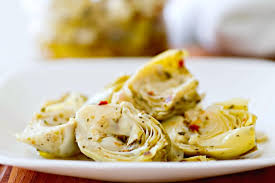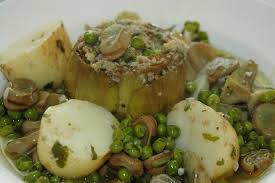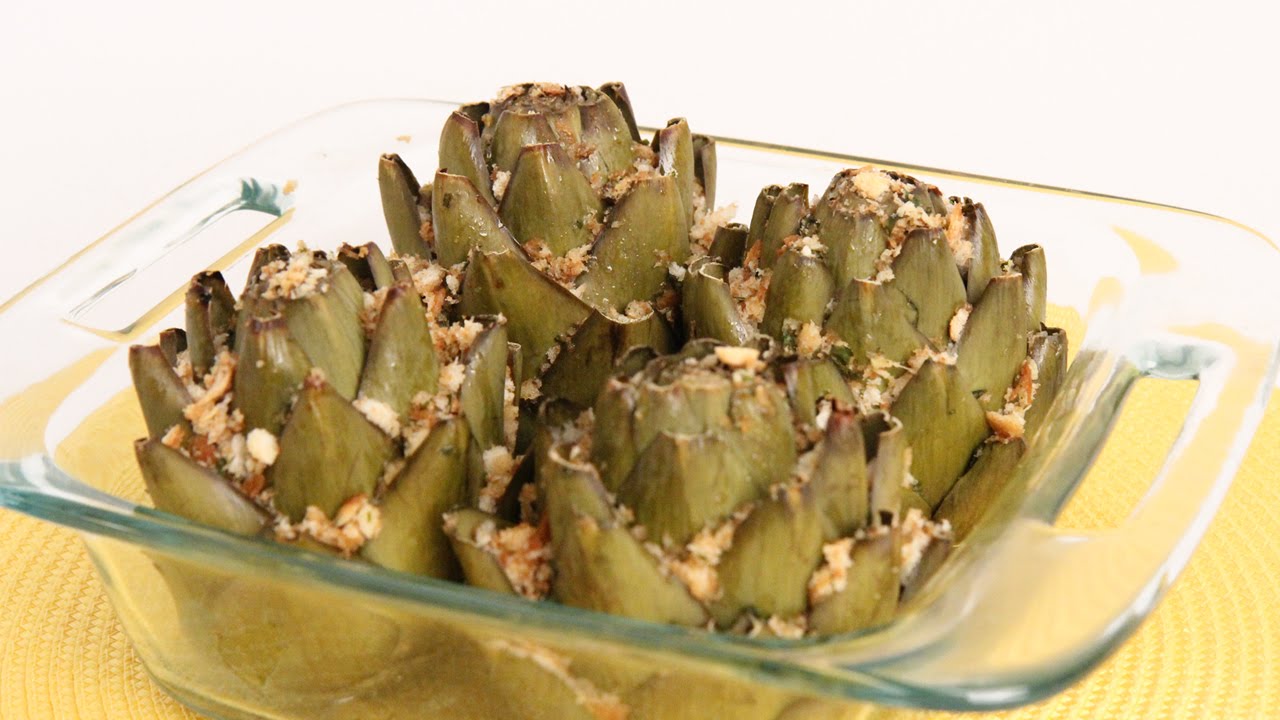How to Cook Artichokes
How to Cook Artichokes
Wonderful Video.

Globe artichokes are known to have been cultivated at Naples around the middle of the 9th century.

The artichoke is still considered a vaguely aphrodisiac tidbit that occasionally is preserved in sugar syrup.
The artichoke, native to the Mediterranean area, has records of use as a food among the ancient Romans.

The artichoke is mentioned as a garden plant in the 8th century BC by Homer and Hesiod. The naturally occurring variant of the artichoke, the cardoon (Cynara cardunculus), which is native to the Mediterranean area, also has records of use as a food among the ancient Greeks and Romans.

Pliny the Elder mentioned growing of ‘carduus’ in Carthage and Cordoba. In North Africa, where it is still found in the wild state, the seeds of artichokes, probably cultivated, were found during the excavation of Roman-period Mons Claudianus in Egypt.

Varieties of artichokes were cultivated in Sicily beginning in the classical period of the ancient Greeks; the Greeks calling them kaktos. In that period, the Greeks ate the leaves and flower heads, which cultivation had already improved from the wild form.

The Romans called the vegetable carduus (hence the name cardoon). Further improvement in the cultivated form appears to have taken place in the medieval period in Muslim Spain and the Maghreb, although the evidence is inferential only.
The names for artichoke in English (artichoke) and many other European languages today (e.g. Italian carciofo, Spanish alcachofa, French artichaut) can be traced back to medieval Andalusi Arabic, which is still used in Maghrebi Arabic today.
Le Roy Ladurie, in his book Les Paysans de Languedoc, has documented the spread of artichoke cultivation in Italy and southern France in the late 15th and early 16th centuries, when the artichoke appeared as a new arrival with a new name, which may be taken to indicate an arrival of an improved cultivated variety:
Learn How to Make Artichoke
Video Below
From You Tube


